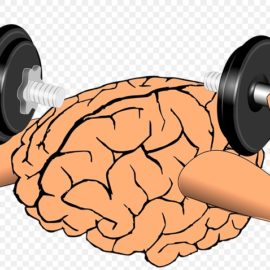

This article is an excerpt from the Shortform book guide to "The Happiness Trap" by Russ Harris. Shortform has the world's best summaries and analyses of books you should be reading.
Like this article? Sign up for a free trial here .
Do you often find yourself lost in thought about the past or the future? Are you disconnected from the present?
In his book The Happiness Trap, Russ Harris refers to being in the present moment as “connection.” Harris writes that connection is the practice of using our observing self to shift our attention away from the past and future in order to be fully engaged in the present.
He offers the following three exercises for developing the skill of connection.
Exercise #1: Five Things
The first exercise Harris suggests to help you be in the present moment aims to help you connect with your environment. He recommends doing it a few times each day.
- Take a moment out of your day. Any moment will do, but Harris suggests that taking a walk may be a good context in which to practice this exercise.
- Look around your environment and pick out five objects you see. You’re training your observing self to pay closer attention to the world around you, bringing you more fully into the present moment.
- Concentrate on your environment and pick out five sounds.
- Concentrate on your body and pick out five things touching you.
| Use Your Senses to Battle Anxiety This exercise is a variant of the well-known 5-4-3-2-1 exercise for dealing with anxiety. This exercise focuses your attention away from anxious, recurrent thoughts (which come from the thinking self, as Harris would describe it) and into the present moment. To practice the 5-4-3-2-1 exercise, notice: Five things you can seeFour things you can feel Three things you can hearTwo things you can smellOne thing you can taste Tapping into each of the five senses grounds you in your physical experience in the present moment. |
Exercise #2: Doing Chores
In this exercise, Harris recommends using an unpleasant task as an opportunity to practice connection.
- Choose a household task that you don’t like doing but that has to get done—for instance, putting away the dishes, sweeping the floor, or cleaning the toilet.
- Practice connection as you do this chore. For example, if you’re putting away the dishes, notice the feel of the ceramic against your fingertips. Hear the sound of dishes clanking as you put them away. Observe the shape of the utensils as you stow them in the drawer.
Harris suggests exercising connection with an unpleasant task two or three times a day. As you practice, it will become easier to achieve connection.
| Single-Tasking This exercise is an example of single-tasking (the opposite of multitasking), which entails being singularly focused on whatever task you’re doing. As you become more skilled at single-tasking, you can increase your connection to the present moment even further by: -Focusing on your breathing -Noticing how your feet feel against the floor, or your body feels in your chair -Noticing the sensation of your clothes against your skin -Paying attention to your posture |
Exercise #3: Breathing for Connection
Just as deep breathing releases tension in Step 2 of expansion (as discussed in Principle #3), Harris’s third exercise uses deep breathing to lower the tension in your body to enable you to practice connection.
The exercise is simple: Breathe deeply 10 times.
- For the first five breaths, concentrate on your breathing—the movement of your stomach, diaphragm, and chest.
- After your first five breaths, allow your observing self to surface. Continue to focus on your breathing, but also pay attention to the input you receive from your five senses.
Since deep breathing is a key aspect of accepting difficult emotions in expansion, this exercise is particularly effective when you’re overwhelmed by your thoughts and feelings. Taking 10 deep breaths can relieve tension and allow you to practice defusion, expansion, and connection.
Remember that the end goal of ACT is to enable you to take effective and committed action—behaviors that align with your values—to build toward a meaningful life. Occasionally, You may discover that there is no immediate solution to your problem. In that case, take some deep breaths and fully accept the thoughts of your thinking self, the feelings of your physical body, and the situation you’re in.
| Mindful Breathing This exercise is an adaptation of mindful breathing. However, while Harris’s exercise is a tool in the process of accepting difficult emotions and taking committed action, the goal of mindful breathing is simply to focus the mind away from stress and anxiety and toward the basic, physical act of the breathing body. To practice mindful breathing, sit or lie down in a comfortable position with your eyes open or closed. (If you’re using mindful breathing to practice connection, keep your eyes open so that you can notice all of your five senses.) As you breathe, inhale deeply through your nose for three seconds. Hold your breath for two seconds. Exhale from your mouth for four seconds. Most practitioners recommend practicing mindful breathing for five minutes at a time—or about 30 breaths. |
Mindfulness: The “Acceptance” in ACT
Harris explains that in the context of ACT, mindfulness is a psychological state of openness and awareness attainable through consistent practice of mindfulness skills (such as defusion, expansion, and connection). In ACT, mindfulness has four specific traits:
- Mindfulness is deliberate.
- Mindfulness requires awareness (the observing self), as opposed to thinking (the thinking self).
- Mindfulness entails being in the present moment.
- Mindfulness requires complete receptivity to experience.
In short, practicing the skills you’ve learned so far allows you to accept your thinking self’s thoughts and images, your physical feelings and urges, and the situations and circumstances of the external world.
But attaining this state is not an end unto itself—instead, ACT relies on the concept of practical application, or the extent to which any behavior helps you develop a valuable and enriching life. In other words, mindfulness is a practical skill (or set of skills) meant to enable you to take action to improve your life in the real world.
| Buddhism’s Definition of Mindfulness In contrast to ACT’s approach to mindfulness, the Buddhist conception of mindfulness relies on four foundations: 1. Mindfulness of body: The body is, itself, composed of bodies (like organs and cells). We should not identify with the whole body nor its components as “ours,” but rather see them merely as physical forms. This helps us accept that they are transient—they will age and undergo injury, illness, and death. Harris only partially addresses mindfulness of the body when he brings up body awareness as a necessary component of expansion. Also, his treatment of body awareness is purely physical and does not have the spiritual element of acknowledging bodily transience. 2. Mindfulness of feelings: Feelings can be classified into pleasant, unpleasant, and neutral feelings. As with the body, none of our feelings are truly our own—they are merely sensations or emotions in the body. Because feelings are impermanent and unsatisfactory, they are not the proper basis for defining the self. Like Buddhism, ACT regards feelings as sensations in the body that are unrelated to who we are as people. Feelings come and go, but the observing self remains. 3. Mindfulness of mind: The mind does not exist—only particular states of mind that respond to external or internal circumstances. Like feelings, thoughts come and go, but they do not form the basis of who we are. Harris’s views align with this description of the mind. His conception of the thinking self versus the observing self relies on the idea that we are not our thinking selves, and our minds do not reflect reality absolutely. 4. Mindfulness of dhammas: Dhammas are “phenomena” or “teachings.” Buddha teaches that enlightenment can only be found by seeking dhammas from within—not through other people. ACT doesn’t encompass this part of Buddhism. Instead of promoting the idea of enlightenment, ACT emphasizes mindfulness as a means to the end of taking committed action. |

———End of Preview———
Like what you just read? Read the rest of the world's best book summary and analysis of Russ Harris's "The Happiness Trap" at Shortform .
Here's what you'll find in our full The Happiness Trap summary :
- Why trying to be happy is making you unhappy
- How to practice ACT, or Acceptance and Commitment Therapy, to become happier
- How to develop “psychological flexibility” toward negative feelings instead of eliminating them






